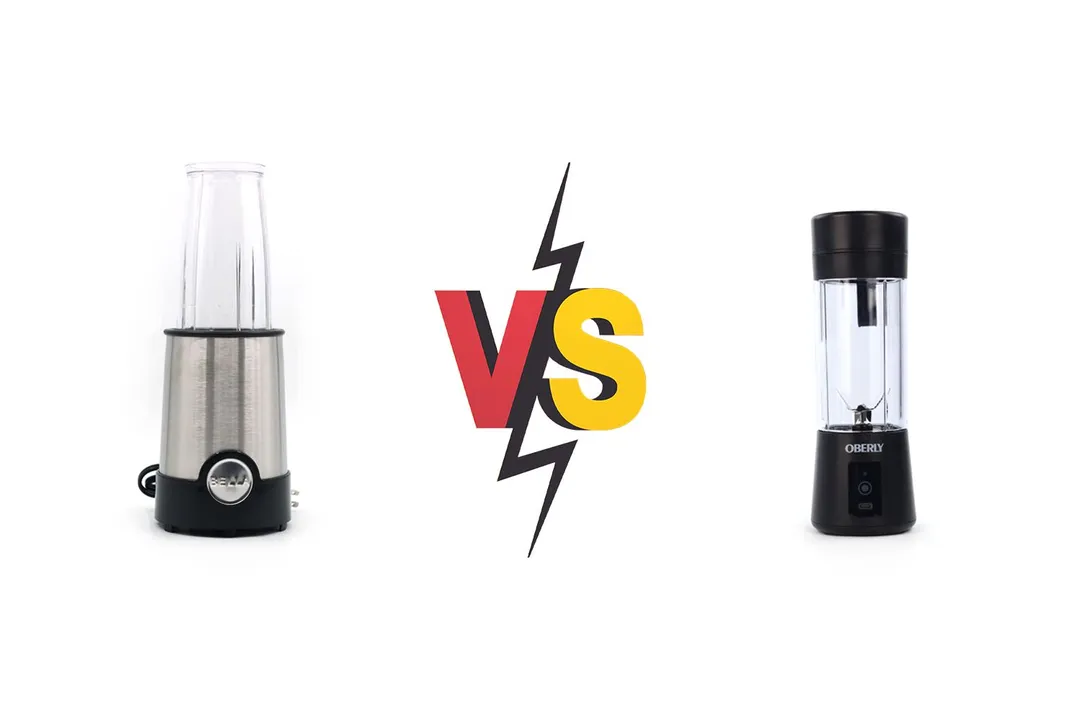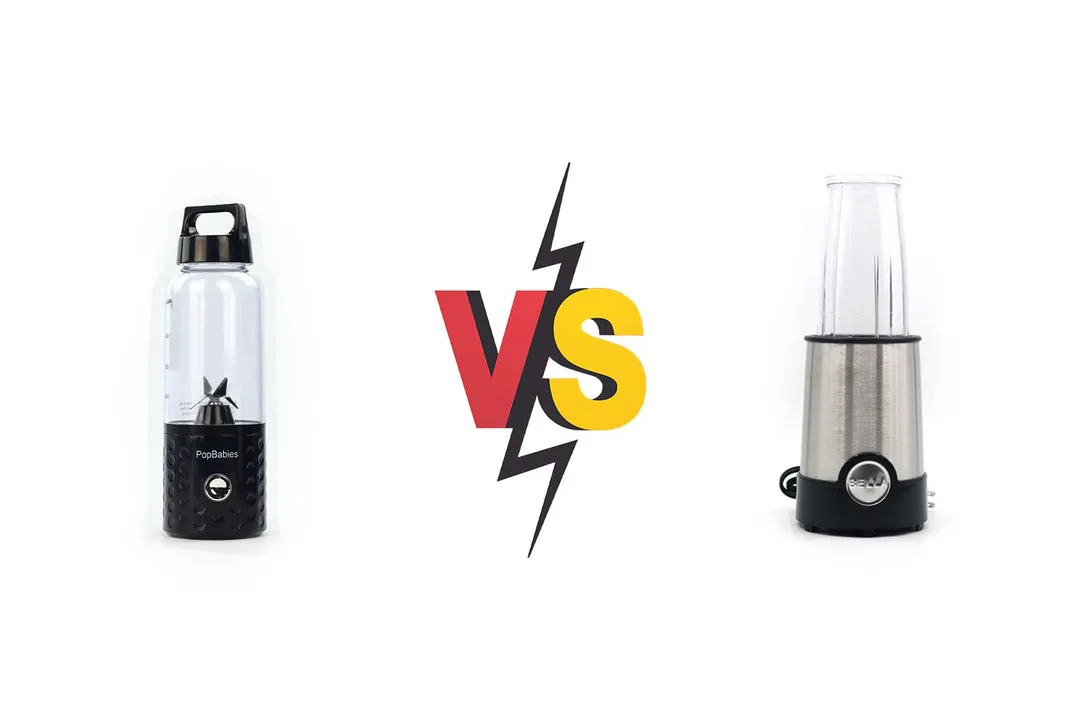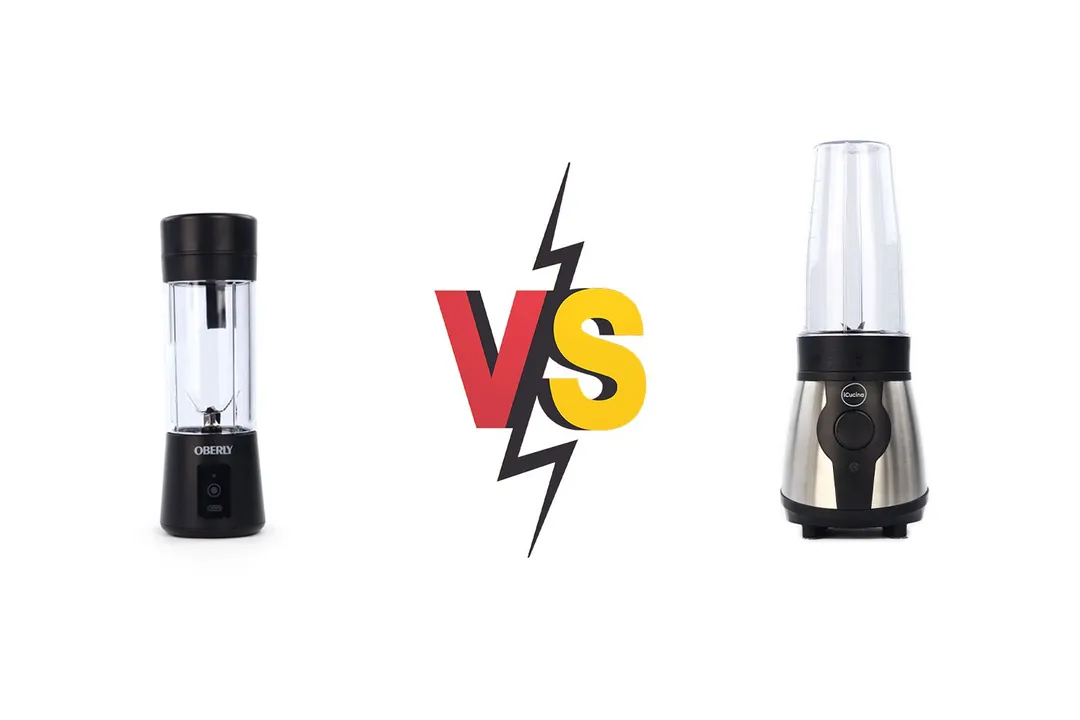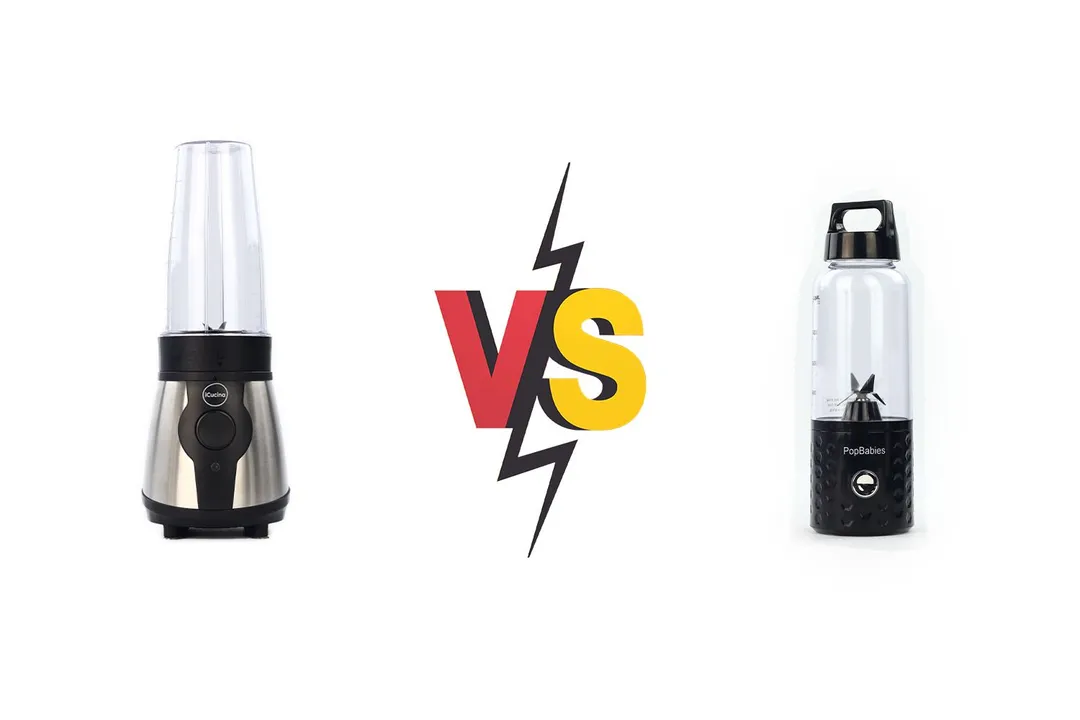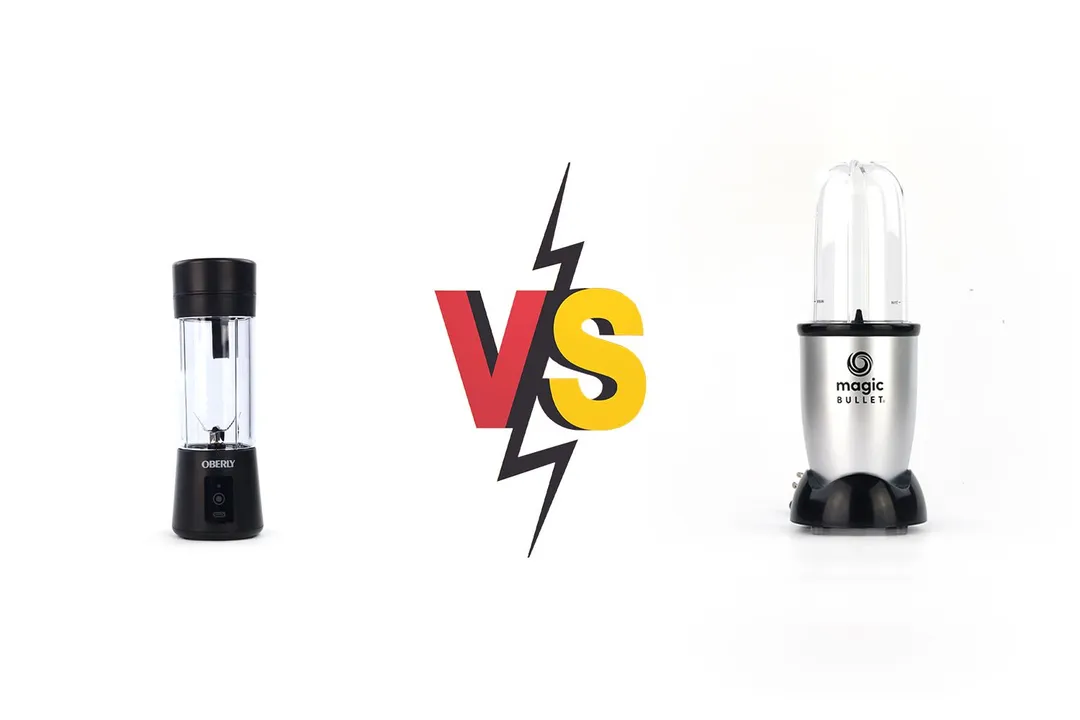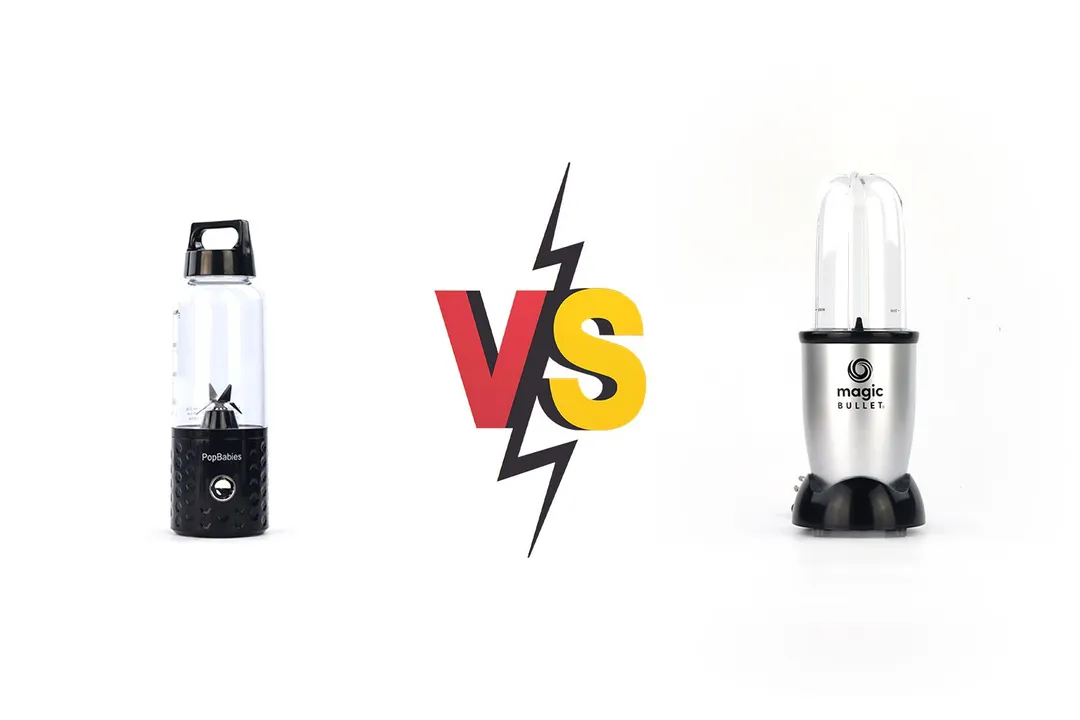Our recommendations are made independently through Research & Testing. We may receive commissions from purchases made via our links.
PopBabies Portable Blender vs. OBERLY Portable Blender Side-by-Side Comparison
PopBabies Portable Blender vs OBERLY Portable Blender. Both seem like an appealing choice, but their poor efficiency and lack of power might let you down.
PopBabies Portable Blender
Tested Using Methodology v1.0OBERLY Portable Blender
Tested Using Methodology v1.0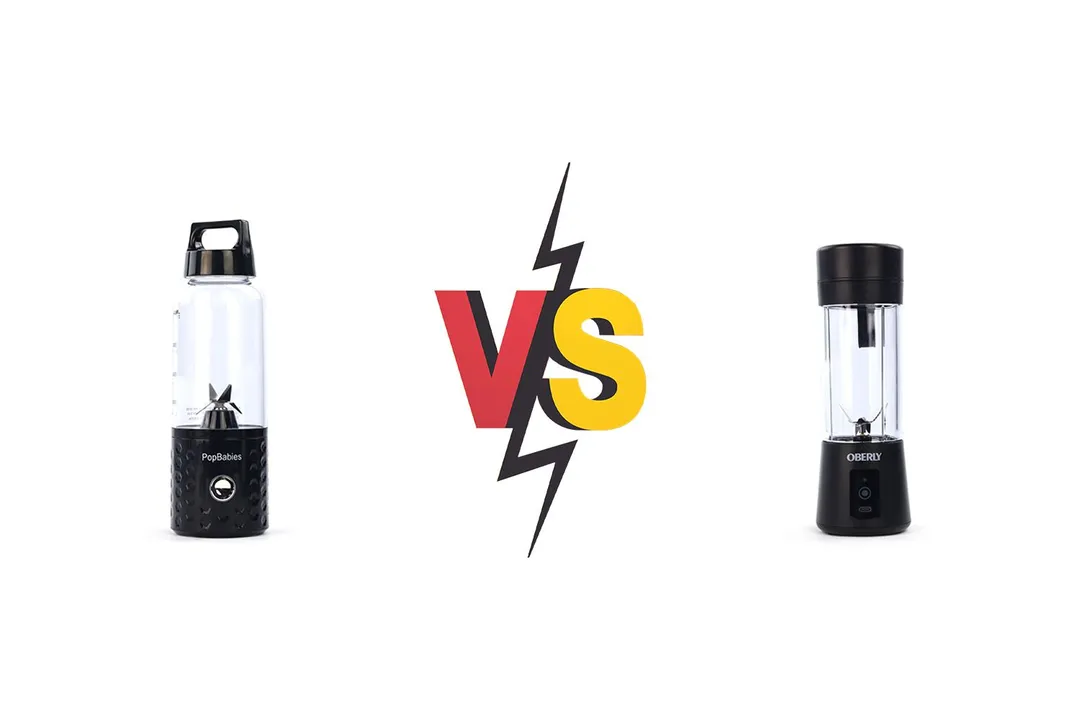
Overall Verdict
The PopBabies and OBERLY share a cordless, portable design and intuitive operation, but this comes at the cost of reduced efficiency when compared to traditional corded personal blenders. In all the tests that involve tough ingredients like raw nuts, ice cubes, leafy greens, and frozen fruits, they both struggled to deliver consistent results.
Nonetheless, if you have to choose between these two blenders, the PopBabies would be the better option, especially when it comes to pureeing baby food and soft fruit smoothies.
The OBERLY, unexpectedly enough, failed to pass any test and received an overall performance score of zero points. In contrast, while the PopBabies just received a score of 2.3/10 points, we found it at least can grind oatmeal and process frozen fruits. The OBERLY may appeal to some for its cuteness, but its inadequate capacity may also leave you underwhelmed.
Pros & Cons
- The cordless design allows for blending on-the-go.
- It is pretty useful when it comes to making small batches of baby food and fresh fruit smoothies.
- The battery is easy to charge.
- Cordless design provides excellent mobility.
- Quite convenient for small batches of baby food and fresh fruit smoothies.
- It’s very easy to charge the battery.
- It’s inadequate for blending tough ingredients like frozen fruits and raw nuts.
- The cup’s small capacity limits the quantity of ingredients.
- Food must be cut into very small pieces before blending.
- The low cost of the blender is reflected in its flimsy construction.
- The cup’s small opening makes it messy to add ingredients.
- The need to shake the blender during operation
- The 175-watt motor is too weak to ensure quick, smooth blends.
- In exchange to its cheap price is a relatively flimsy construction.
- For a thorough blending process, it requires cutting the food into tiny particles.
- Some may find it annoying to shake the blender while it is blending.
Key Specs
Where to Buy
*You help support HealthyKitchen101's product testing and reviews by purchasing from our retail partners.
Analysis and Test Results
Performance
Protein Shake

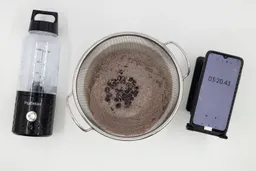
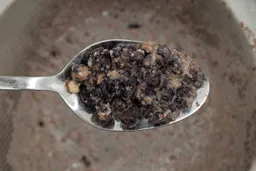
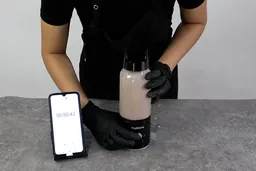
Frozen Fruit Smoothie
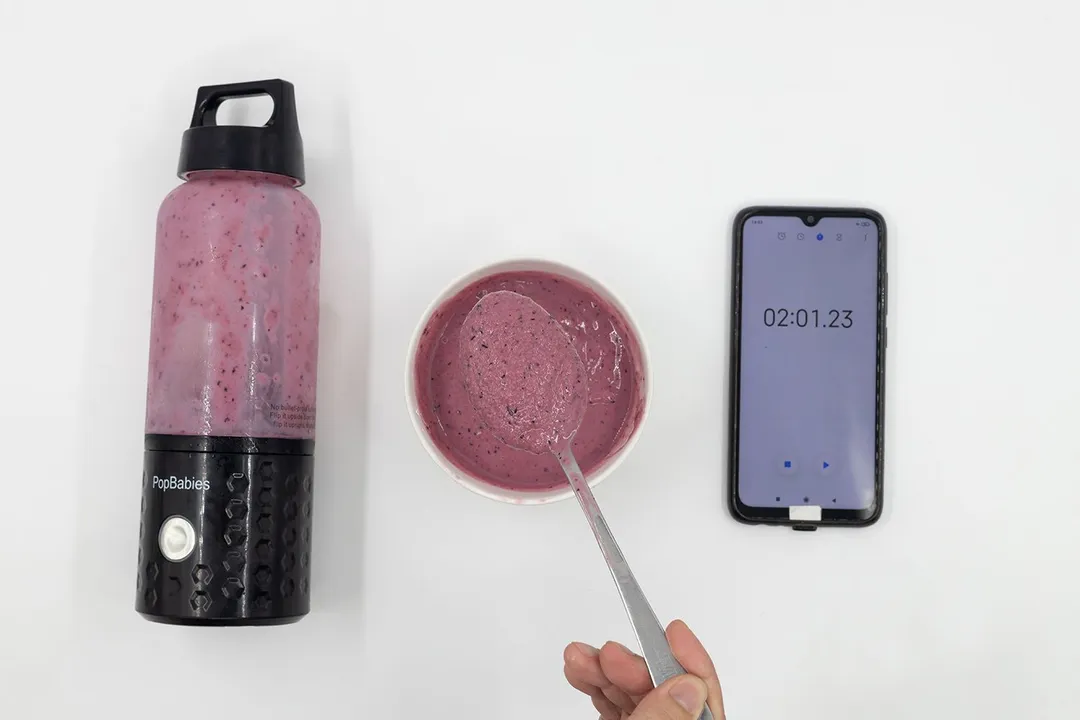


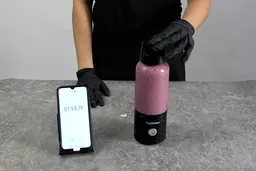

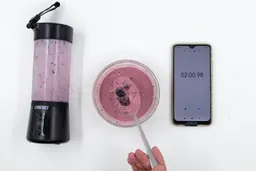

Fibrous Greens


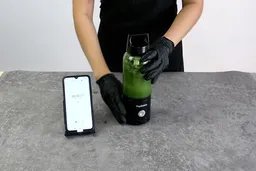
Crushed Ice Cubes
Design
In the Box
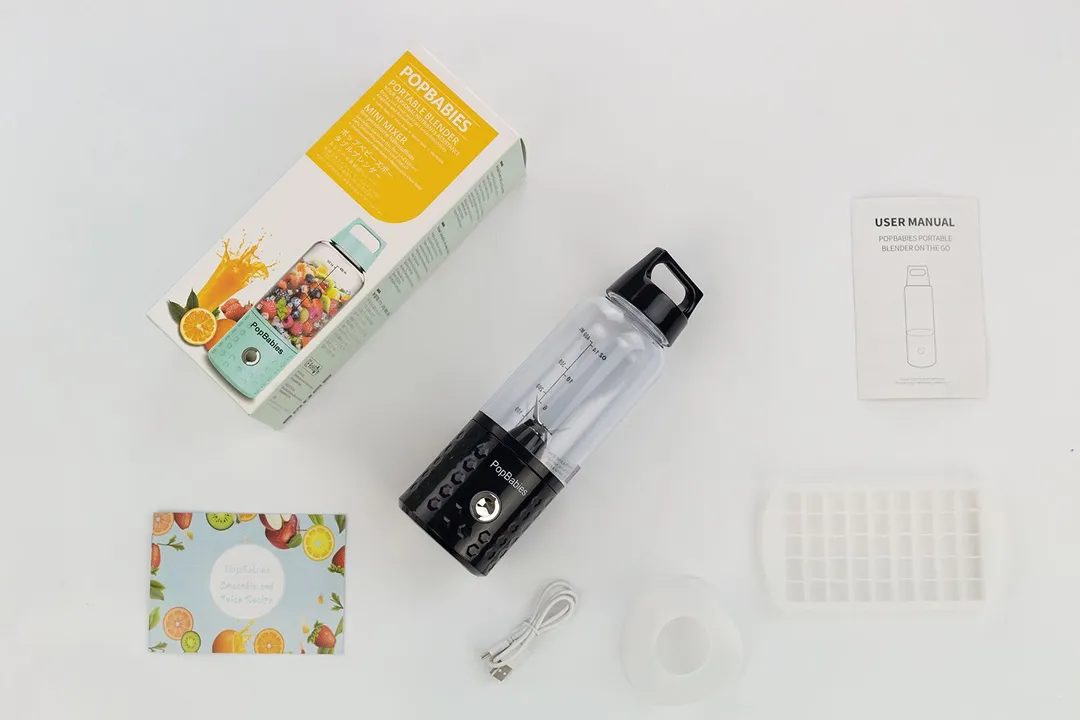

Dimensions


Build Quality
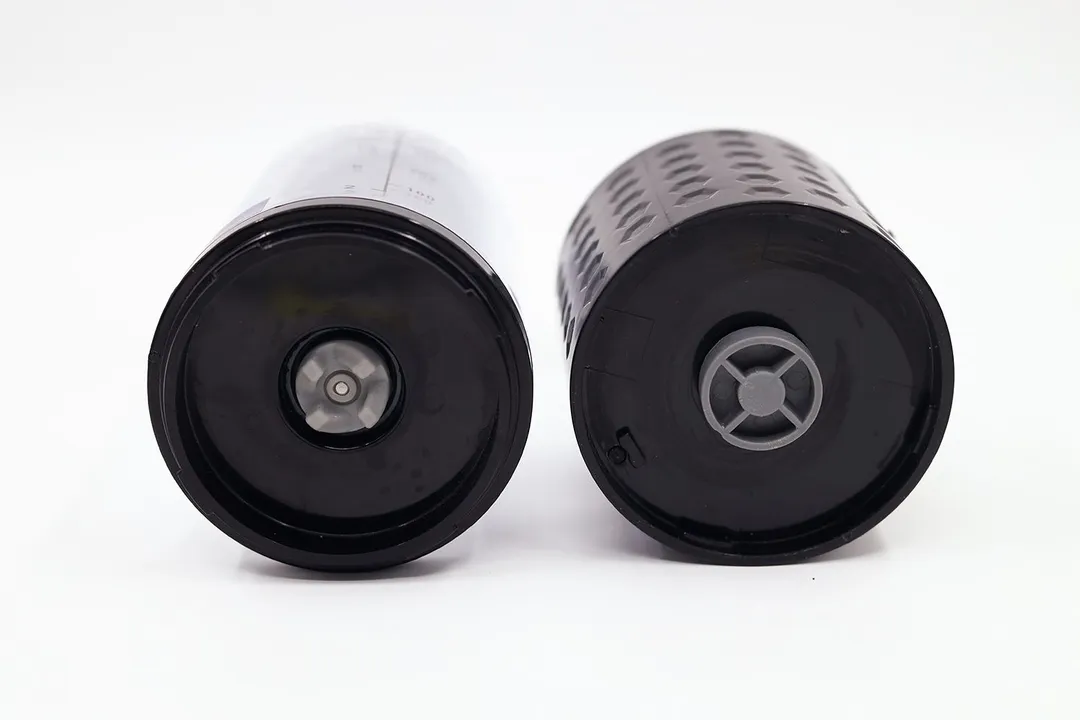
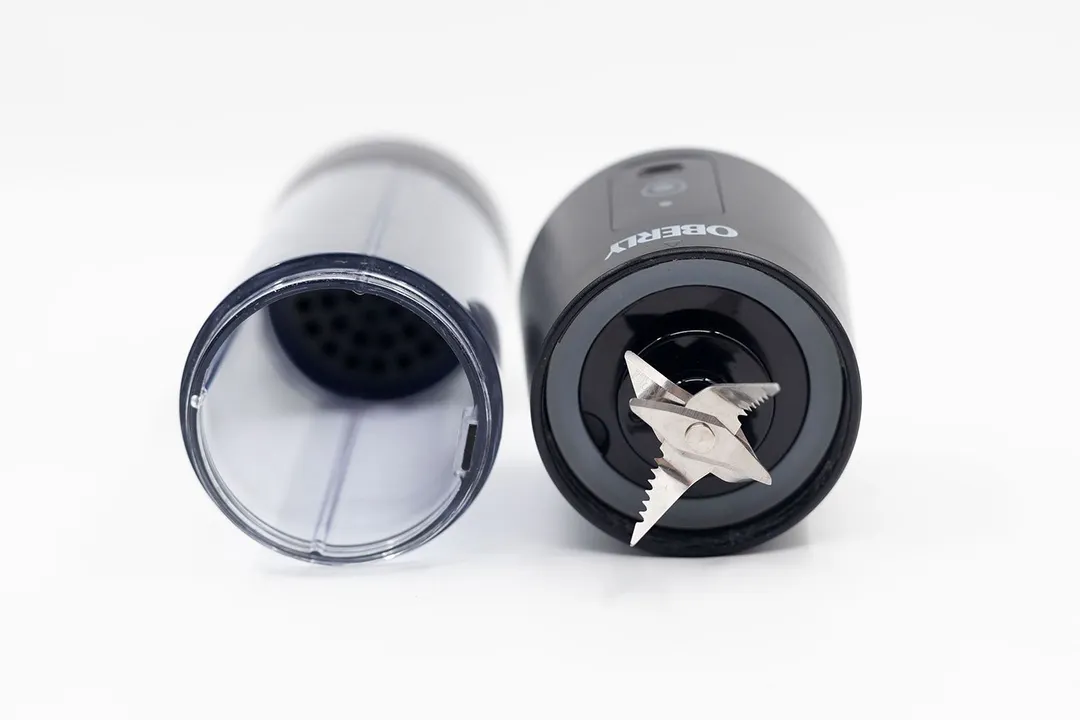
Blades
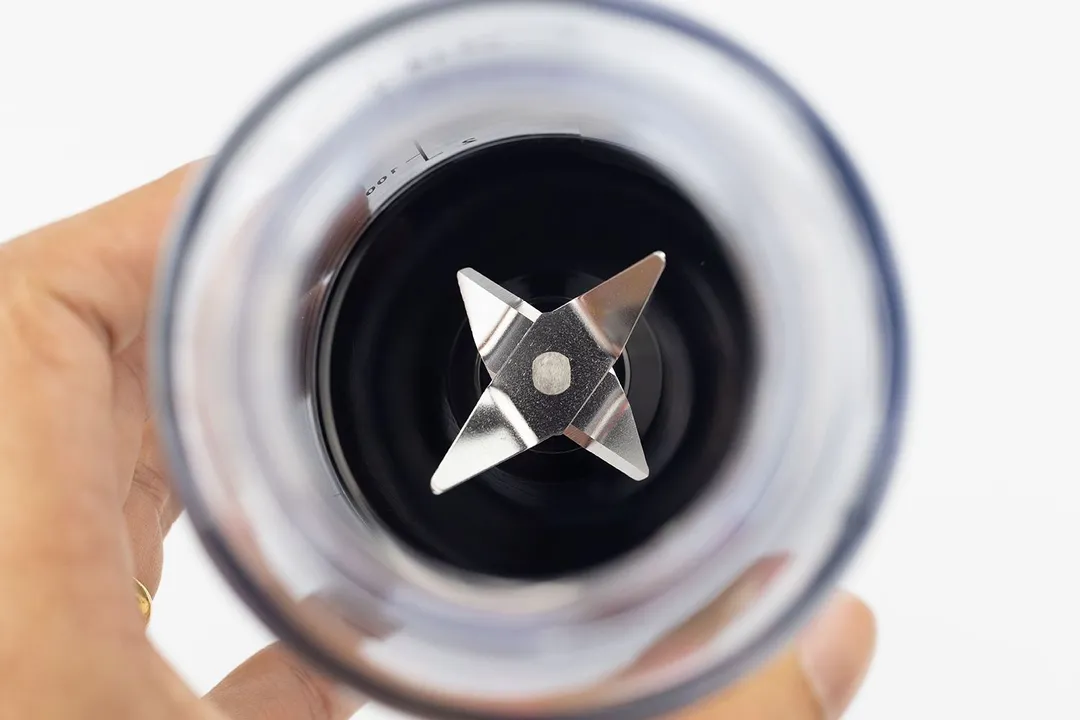
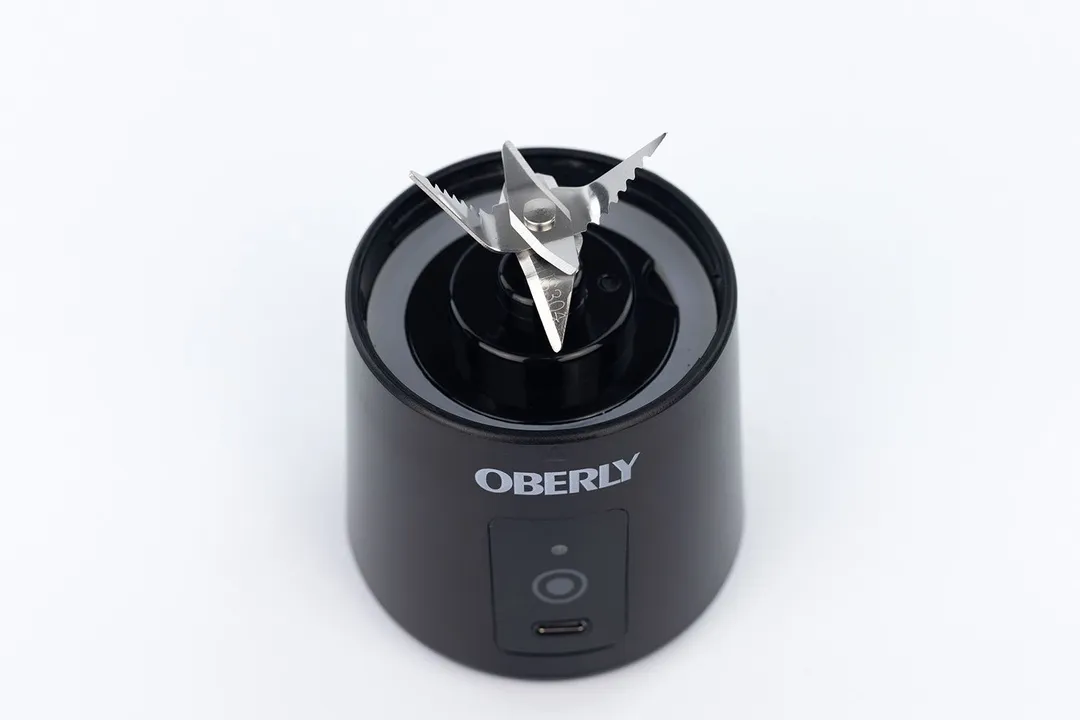
Motor Base
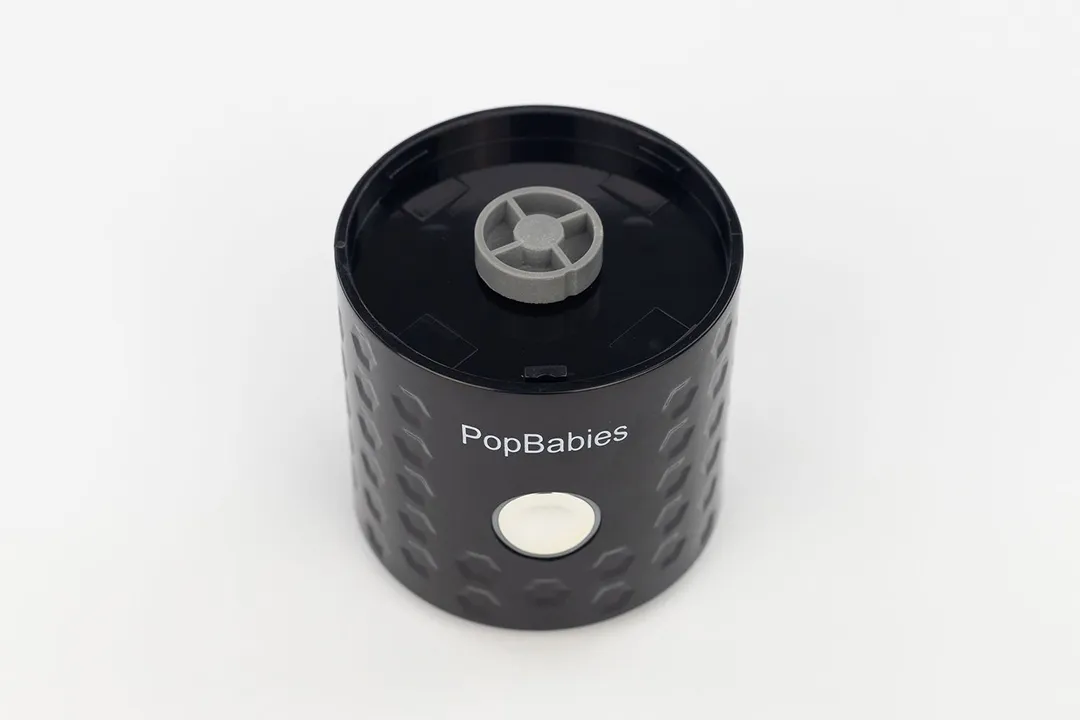

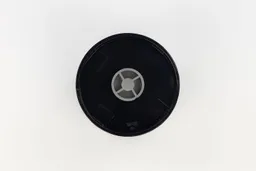
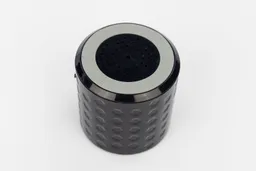

Blending Cup

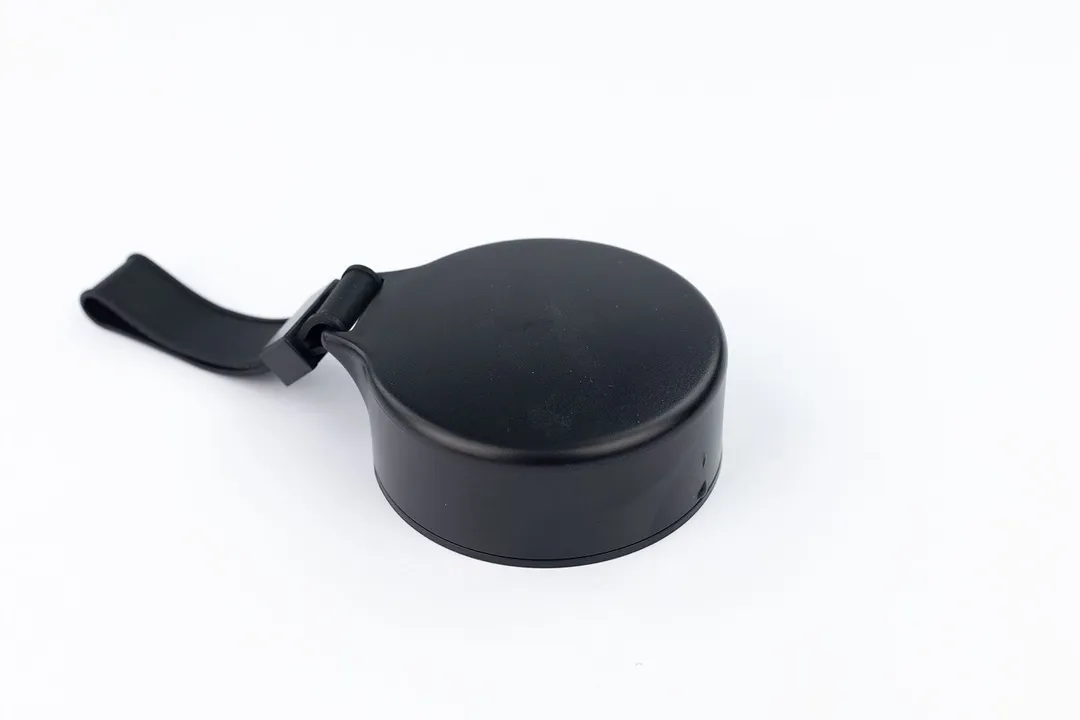

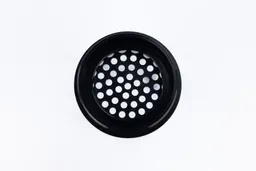
Speed and Controls


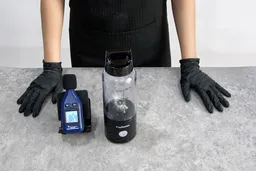

Usability
Hands-Free Operation
Assembly
Cleanability
Behind the Comparison
Tina Pham is a staff writer and reviewer, with five years of experience in the industry. As a passionate amateur home cook, she loves to discover practical cooking solutions, and has made it her mission to bring her findings to every kitchen. Her ultimate goal is making cooking more of a pleasure for all.
Lap is Head of the Research, Testing, and Review Team (RTR Team) at HealthyKitchen101.com, where he directs and supervises the testing of kitchen gadgets and appliances.
Nguyen Ntk is a graphic designer, photographer, and videographer whose philosophy centers around respecting and celebrating the beauty of reality. Through his lenses, Nguyen strives to capture the true essence of objects and events, showcasing and highlighting authentic features without distortion or exaggeration.



